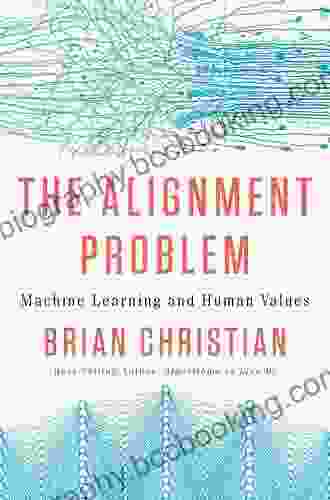The rapid advancement of machine learning (ML) technology has ignited a profound discussion about its potential impact on society. A central concern that has emerged is the "alignment problem," which centers around the question of how to ensure that ML systems are aligned with human values and goals.
As ML systems become more powerful and capable, their potential to influence our lives in both positive and negative ways grows exponentially. The alignment problem arises from the challenge of ensuring that ML systems act in a manner consistent with our values and interests, even when those values and interests are not explicitly programmed into the system.
The consequences of a misalignment between ML systems and human values could be significant. For example, an ML system designed to optimize productivity could potentially prioritize efficiency at the expense of worker well-being. Or, an ML system developed for healthcare could favor certain treatments over others based on their cost-effectiveness, even if those treatments are not in the best interests of the patient.
Ethical and Philosophical Considerations
The alignment problem raises a host of ethical and philosophical questions about the nature of intelligence, consciousness, and the relationship between humans and machines. Some argue that it is impossible to fully align ML systems with human values, as machines will never truly understand or experience the full range of human emotions and experiences. Others believe that it is a solvable problem, but requires a fundamental rethinking of how we design and develop ML systems.
At the heart of the alignment problem is the question of what it means to be "aligned" with human values. Is it simply a matter of following a set of rules or instructions? Or does it require a deeper understanding of human motivations, desires, and fears?
Philosophers and ethicists have been grappling with these questions for centuries. The advent of ML has given new urgency to these discussions, as we now have the technological capability to create systems that are capable of acting in the world in ways that have profound implications for human well-being.
Practical Challenges and Solutions
In addition to the ethical and philosophical challenges, the alignment problem poses a number of practical challenges for researchers and engineers who are developing ML systems. One of the biggest challenges is the sheer complexity of ML systems. These systems are often composed of billions or even trillions of parameters, making it difficult to understand and predict their behavior.
Another challenge is the fact that ML systems are often trained on data that is biased or incomplete. This can lead to the systems learning harmful or discriminatory behaviors. For example, an ML system trained on a dataset of news articles that is dominated by negative stories about a particular group of people may learn to associate that group with negative traits.
Despite these challenges, researchers are working on a number of promising approaches to address the alignment problem. One approach is to develop new methods for training ML systems that are more robust to bias and noise. Another approach is to develop new techniques for verifying and validating the behavior of ML systems before they are deployed in the real world.
Ultimately, the alignment problem is a complex and multifaceted challenge that requires a collaborative effort from researchers, engineers, philosophers, and policymakers. By working together, we can develop ML systems that are truly aligned with human values and goals.
The alignment problem is a defining issue of our time. As ML technology continues to advance, it is imperative that we develop a deep understanding of the ethical, philosophical, and practical challenges posed by the alignment problem. By ng so, we can ensure that ML systems are used for good and not for evil.


























































































